Cotton: Natural Textile Guide for Apparel Business
Cotton is practically synonymous with clothing. As an apparel business, understanding this fundamental textile material is essential. Simply put, cotton is a widely utilized natural fiber that originates from a plant. Its significance extends beyond garments to accessories like labels and tags, playing a vital role in product presentation and information.
This guide offers clear, practical insights into cotton, a natural fiber derived from the Gossypium plant and mainly composed of cellulose. Understanding cotton helps small businesses make informed decisions about their materials. Readers will gain knowledge about cotton’s origins, its inherent properties, common varieties, and specific applications relevant to the apparel business.
1. From plant to fiber: The Gossypium connection
The journey of cotton begins with the cotton plant, scientifically known as Gossypium, a member of the Malvaceae (mallow) family. The usable part is the soft cotton fiber, which is actually the seed hair found within the boll, the protective capsule that surrounds the seeds.
The primary component giving the fiber its structure is natural cellulose, a complex carbohydrate that underscores its natural origin. Globally, cotton stands as a major agricultural crop and cash crop, cultivated extensively in many regions, with India and the United States being among the leading producers, highlighting its economic importance in the textiles industry.
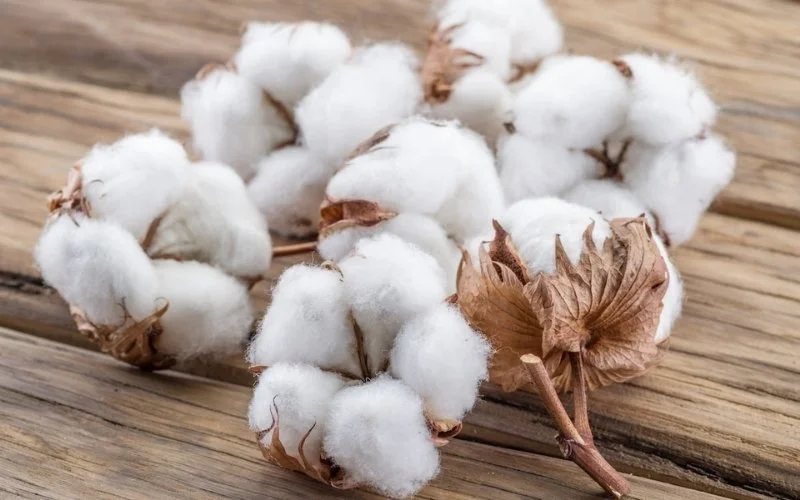
2. What makes cotton fiber unique?
Several inherent properties make cotton fiber particularly well-suited for apparel and related accessories. Its renowned softness provides a comfortable feel against the skin, a primary reason for its widespread use in clothing. Coupled with this is its excellent breathability; the structure of the cotton fiber allows air to circulate freely, enhancing comfort, especially in warmer conditions.
Furthermore, cotton exhibits high absorbency, meaning it can readily take up moisture like water or sweat, which contributes to comfort and also makes it receptive to dyes. Its notable durability and good tensile strength ensure that products can withstand regular use and washing. An interesting characteristic is that cotton often becomes stronger when wet, a valuable trait for items like clothing, labels, and tags that undergo frequent laundering.
3. Cultivation and harvesting: Starting at the source
Successful cultivation of the cotton plant hinges on specific environmental factors. It requires ample sunshine, consistently warm temperatures characterized by a long frost-free period, and moderate water supply, sourced either from rainfall or controlled irrigation.
Cotton is typically grown as an annual crop. The harvesting process begins when the cotton bolls mature and burst open, exposing the white, fluffy cotton fiber. Harvesting can be done by hand, a method still used in some regions, or mechanically, which is the prevalent approach in large-scale agricultural production, particularly in countries like the US.
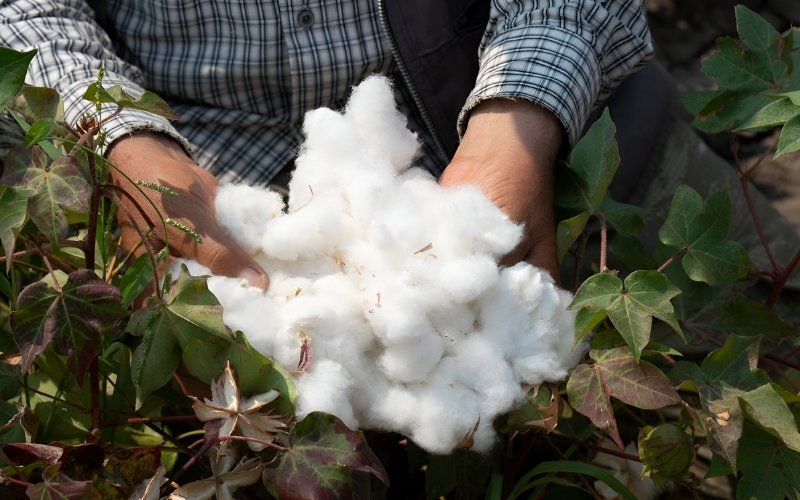
4. Ginning: Separating fiber from seed
After harvesting, the raw cotton fiber is still attached to the cotton seeds. The crucial next step is ginning, a mechanical process designed specifically to separate the valuable fibers (often called lint) from the seeds. This separation is accomplished using a cotton gin.
The invention of an efficient cotton gin by Eli Whitney dramatically accelerated this process, playing a pivotal role during the Industrial Revolution by enabling the large-scale textile manufacturing needed to meet growing demand. It’s worth noting that the separated cottonseed isn’t waste; it serves as a significant byproduct, processed for oil and used in animal feed, making the harvest more efficient before the fibers move on to be processed into yarn.
5. Spinning and weaving: Creating yarn and fabric
Once ginned, the cleaned and carded (a process that aligns the fibers) cotton fibers undergo spinning. During spinning, these loose fibers are drawn out and twisted together, transforming them into continuous strands known as cotton yarn or thread.
This yarn is the intermediate material that forms the basis of cotton fabric. The final textile material is created through processes like weaving (where yarns are interlaced at right angles) or knitting (where yarns are looped together). These techniques produce the versatile cotton fabric used extensively for clothing, labels, and other textile products.
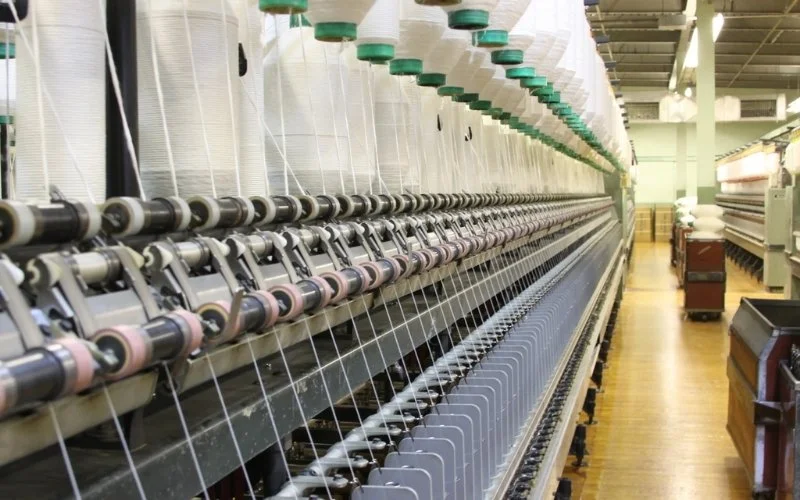
6. Unmatched comfort: Softness and breathability
The exceptional comfort offered by cotton stems largely from its inherent characteristics as a natural fiber. Its notable softness, linked to its cellulosic composition, results in a pleasant feel against the skin, minimizing potential irritation.
This makes it an ideal choice for everyday apparel. Complementing its softness is cotton’s excellent breathability. The fiber structure facilitates airflow and allows moisture vapor to escape from the body, aiding in temperature regulation and enhancing comfort, particularly during extended wear or in warm climates.
7. Performance perks: Absorbency and durability
Beyond comfort, cotton offers practical performance benefits. Its high absorbency is a key characteristic; the fiber can hold a significant amount of moisture relative to its weight. This property is crucial for effective dyeing, allowing fabrics to achieve deep, vibrant colors, and enhances printing processes by enabling good ink adhesion, which is vital for clear labels and tags.
While absorbency contributes to comfort by managing sweat, it also plays a role in care. Cotton’s durability ensures it holds up well to everyday wear and tear. Importantly, it withstands repeated washing, a critical factor for both clothing and especially for labels and tags that must remain legible and intact throughout the garment’s life. The fact that cotton often gains strength when wet further bolsters its resilience.
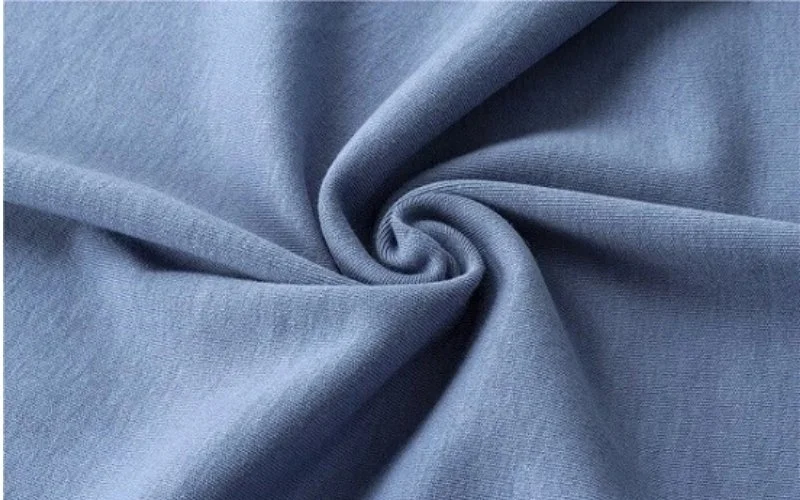
8. Versatility in design: Dyeing and printing potential
Cotton’s versatility extends significantly into design possibilities. The fiber exhibits an excellent affinity for a wide range of dyes, enabling the creation of cotton fabric and yarn in a vast spectrum of rich and lasting colors. This characteristic allows apparel businesses great flexibility in meeting aesthetic preferences.
Furthermore, cotton serves as an effective substrate for various printing techniques commonly employed in the apparel industry, such as screen printing and digital printing. This suitability is particularly advantageous for applying detailed branding, logos, care instructions, and decorative elements onto garments, labels, and tags.
9. The importance of staple length
A critical factor determining the quality and characteristics of cotton products is the staple length, which refers to the average length of the individual cotton fibers harvested from the boll. Longer staple length fibers are highly desirable because they can be spun into smoother, finer, and stronger yarns.
Consequently, fabric made from longer staple cotton tends to be softer, more lustrous (appearing less fuzzy), more durable, and less prone to pilling (forming small balls of fiber on the surface). Conversely, shorter staple cotton fibers typically yield coarser textiles. Understanding staple length is key to differentiating cotton quality and selecting appropriate materials for specific product needs.
10. Common cotton types you’ll encounter
Apparel businesses sourcing materials will frequently encounter several main types of cotton:
- Upland cotton (Gossypium hirsutum): This is the most widely grown type globally, representing the bulk of cotton production. Upland cotton generally has a medium staple length, making it a versatile and cost-effective choice for a broad array of everyday fabrics, including standard apparel, as well as functional labels and tags.
- Extra-long staple (ELS) cottons: This category includes well-known varieties like Pima cotton (Gossypium barbadense), primarily cultivated in the US, and Egyptian cotton, which often refers to G. barbadense grown in Egypt. These cottons are distinguished by their significantly longer staple length. This results in yarns and fabrics renowned for superior softness, increased strength, and enhanced luster. ELS cottons are considered premium options, ideal for higher-quality garments and softer-feel labels.
- Organic cotton: It’s important to note that organic cotton refers to the farming method rather than a specific botanical type (it could be organically grown Upland or Pima, for instance). Organic cotton is cultivated without the use of synthetic pesticides, herbicides, or fertilizers, adhering to specific agricultural standards. Its relevance lies primarily in sustainable branding and appealing to environmentally conscious consumers.
| Feature | Upland Cotton | Pima / ELS Cotton |
|---|---|---|
| Species | Gossypium hirsutum | Gossypium barbadense |
| Staple Length | Medium | Extra-Long |
| Key Traits | Standard, versatile, durable | Superior softness, luster, strength |
| Common Uses | Everyday fabric, standard labels/tags | Premium apparel, softer labels |
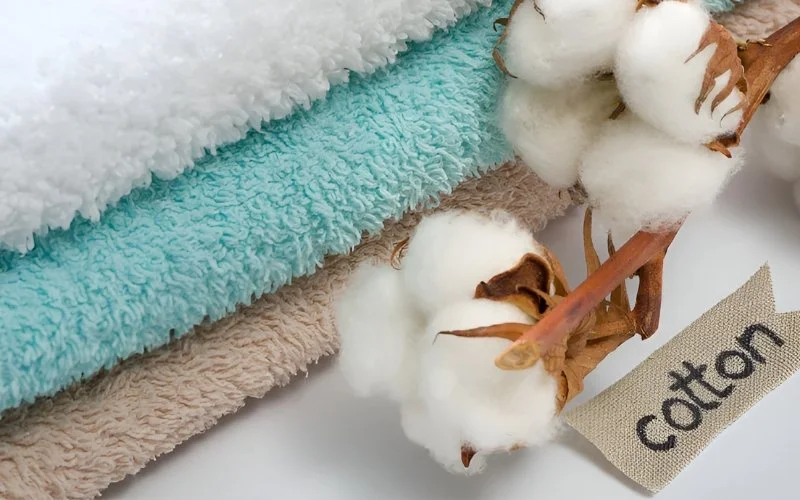
11. Clothing: The go-to natural choice
Cotton remains the dominant natural fiber in the clothing industry for compelling reasons. Its combination of desirable traits – inherent softness, excellent breathability, overall comfort, reliable durability, and relative ease of care – makes it exceptionally well-suited for a vast range of garments, from everyday basics to more specialized apparel.
Cotton presents a viable and often preferred option for both labels (such as woven or printed care labels sewn into garments) and tags (like hang tags providing branding and product information). Its natural look and feel can effectively complement cotton garments, reinforcing a cohesive product identity. Key advantages include good durability through repeated washing, which is essential for care instructions to remain legible over time. Cotton surfaces also generally accept printing well, allowing for clear depiction of logos, branding elements, and required information. Woven cotton labels, in particular, can impart a sense of premium quality.
When selecting cotton for these applications, considerations include the desired hand-feel (a standard Upland cotton versus a noticeably softer Pima cotton), the level of durability needed based on the garment’s intended use and care, and compatibility with the chosen printing or weaving technique. While cotton offers many benefits, it’s worth noting that for applications requiring extreme durability, such as industrial workwear subject to harsh washing conditions, synthetic fiber labels (like polyester) might offer higher resistance to abrasion and chemicals.
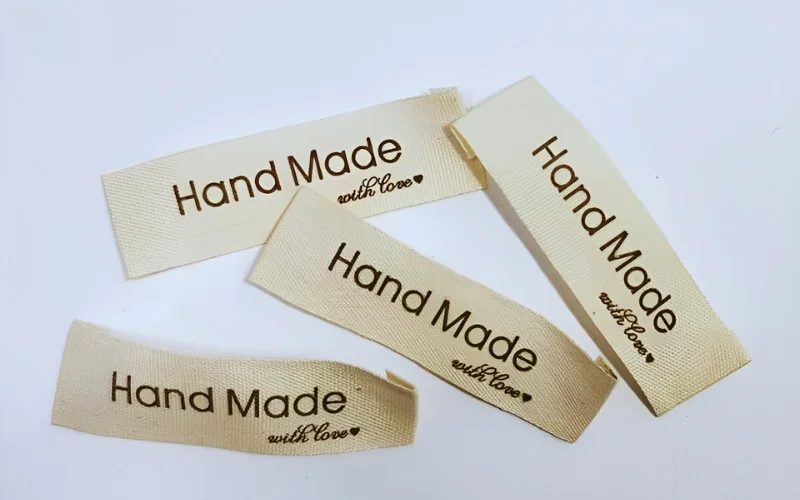
13. Beyond fabric: Thinking about packaging
While the focus is often on the garment material itself, understanding natural fibers like cotton also informs decisions about related business elements, including packaging. It’s important to clarify that standard shipping solutions such as poly mailers and zipper bags are typically made from synthetic materials (plastics like polyethylene), not cotton. However, appreciating the qualities of the cotton garments being shipped underscores the need for appropriate protection.
Choosing durable, suitable packaging—like robust poly mailers or secure zipper bags—is crucial to safeguard the quality and presentation of cotton apparel during transit and handling, ensuring items reach the customer in excellent condition.
This awareness of material choices extends across the product lifecycle. For instance, businesses might also consider sustainable packaging options, such as mailers made from recycled content, to align with broader brand values.
14. Related questions
14.1 Is cotton stronger than polyester?
Generally, polyester exhibits higher tensile strength (resistance to breaking under tension) and better abrasion resistance compared to cotton, particularly when dry. However, cotton has the unique property of becoming stronger when wet, whereas polyester’s strength remains relatively unchanged. The choice often depends on the specific application and required performance characteristics.
14.2 Does cotton shrink when washed?
Yes, untreated cotton fabric is prone to shrinkage, especially when exposed to hot water during washing or high heat in a dryer. This occurs because the tension applied to the fibers and yarns during manufacturing relaxes when wet and heated. Many cotton garments are pre-shrunk during manufacturing to minimize further shrinkage for the end consumer.
14.3 What’s the difference between cotton and linen?
Both are popular natural plant fibers, but they originate from different parts of their respective plants. Cotton comes from the fluffy seed boll of the cotton plant, while linen is derived from the fibrous stem of the flax plant. Texturally, linen often feels crisper and develops a softer handle over time with washing. Generally, linen is considered stronger and more absorbent than cotton but also wrinkles more easily.
14.4 Can cotton be recycled?
Yes, cotton is recyclable. Post-consumer or pre-consumer cotton waste can be processed mechanically (shredded back into fiber) or chemically (dissolved and regenerated into new fibers) to create recycled cotton yarns and fabrics. While the quality, particularly fiber length, can degrade somewhat during mechanical recycling, cotton recycling is a growing area of focus within the textile industry’s drive towards greater sustainability.
Read more:
In summary, cotton stands as a remarkably versatile and valuable natural fiber, foundational to the world of textiles. Its inherent softness and breathability make it a perennial favorite for comfort. For an apparel business, grasping the nuances of cotton’s properties—like absorbency and durability—along with understanding its journey from field to fabric through processes like the cotton gin and spinning, is crucial. Differentiating between common types, such as standard Upland cotton and premium Pima cotton, further empowers businesses to make strategic choices for their clothing lines, as well as essential components like labels and tags.
Applying this knowledge directly impacts product quality, sourcing efficiency, and overall brand appeal. Informed material selection ensures that garments meet customer expectations and that branding elements like labels endure. Businesses equipped with this understanding can better navigate supplier discussions and align material choices with their specific market positioning.
To further explore how the right materials can elevate your brand, consider reaching out for personalized advice. For high-quality cotton labels, informative tags, or effective packaging solutions tailored to your apparel business needs, contact Packlove for expert consultation and tailored solutions.






















